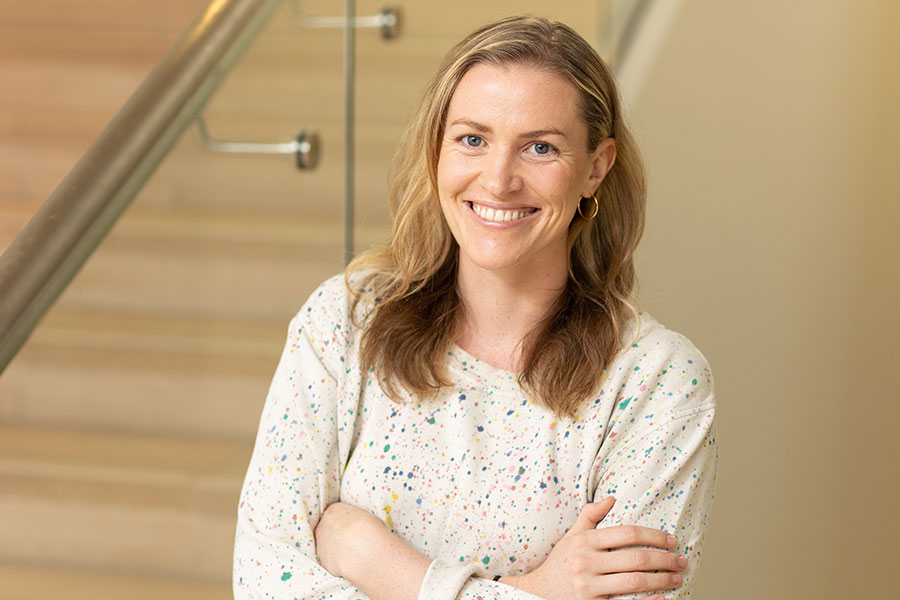Refining mental health diagnoses
Maedbh King is building computer models to help clinicians improve diagnosis and treatment for young people with neurodevelopmental and psychiatric disorders.

Maedbh King came to MIT to make a difference in mental health. As a postdoctoral fellow in the K. Lisa Yang Integrative Computational Neuroscience (ICoN) Center, she is building computer models aimed at helping clinicians improve diagnosis and treatment, especially for young people with neurodevelopmental and psychiatric disorders.
Tapping two large patient-data sources, King is working to analyze critical biological and behavioral information to better categorize patients’ mental health conditions, including autism spectrum disorder, attention-deficit hyperactivity disorder (ADHD), anxiety, and suicidal thoughts — and to provide more predictive approaches to addressing them. Her strategy reflects the center’s commitment to a holistic understanding of human brain function using theoretical and computa-tional neuroscience.
“Today, treatment decisions for psychiatric disorders are derived entirely from symptoms, which leaves clinicians and patients trying one treatment and, if it doesn’t work, trying another,” says King. “I hope to help change that.”
King grew up in Dublin, Ireland, and studied psychology in college; gained neuroimaging and programming skills while earning a master’s degree from Western University in Canada; and received her doctorate from the University of California, Berkeley, where she built maps and models of the human brain. In fall 2022, King joined the lab of Satrajit Ghosh, a McGovern Institute principal research scientist whose team uses neuroimaging, speech communication, and machine learning to improve assessments and treatments for mental health and neurological disorders.
Big-data insights
King is pursuing several projects using the Healthy Brain Network, a landmark mental health study of children and adolescents in New York City. She and lab colleagues are extracting data from cognitive and other assessments — such as language patterns, favorite school subjects, and family mental illness history — from roughly 4,000 participants to provide more-nuanced understanding of their neurodevelopmental disorders, such as autism or ADHD.
“Computational models are powerful. They can identify patterns that can’t be obtained with the human eye through electronic records,” says King.
With this database, one can develop “very rich clinical profiles of these young people,” including their challenges and adaptive strengths, King explains. “We’re interested in placing these participants within a spectrum of symptoms, rather than just providing a binary label of, ‘has this disorder’ or ‘doesn’t have it.’ It’s an effort to subtype based on these phenotypic assessments.”
In other research, King is developing tools to detect risk factors for suicide among adolescents. Working with psychiatrists at Children’s Hospital of Philadelphia, she is using detailed questionnaires from some 20,000 youths who visited the hospital’s emergency department over several years; about one-tenth had tried to take their own lives. The questionnaires collect information about demographics, lifestyle, relationships, and other aspects of patients’ lives.
“One of the big questions the physicians want to answer is, Are there any risk predictors we can identify that can ultimately prevent, or at least mitigate, future suicide attempts?” King says. “Computational models are powerful. They can identify patterns that can’t be obtained with the human eye through electronic records.”
King is passionate about producing findings to help practitioners, whether they’re clinicians, teachers, parents, or policy makers, and the populations they’re studying. “This applied work,” she says, “should be communicated in a way that can be useful.




